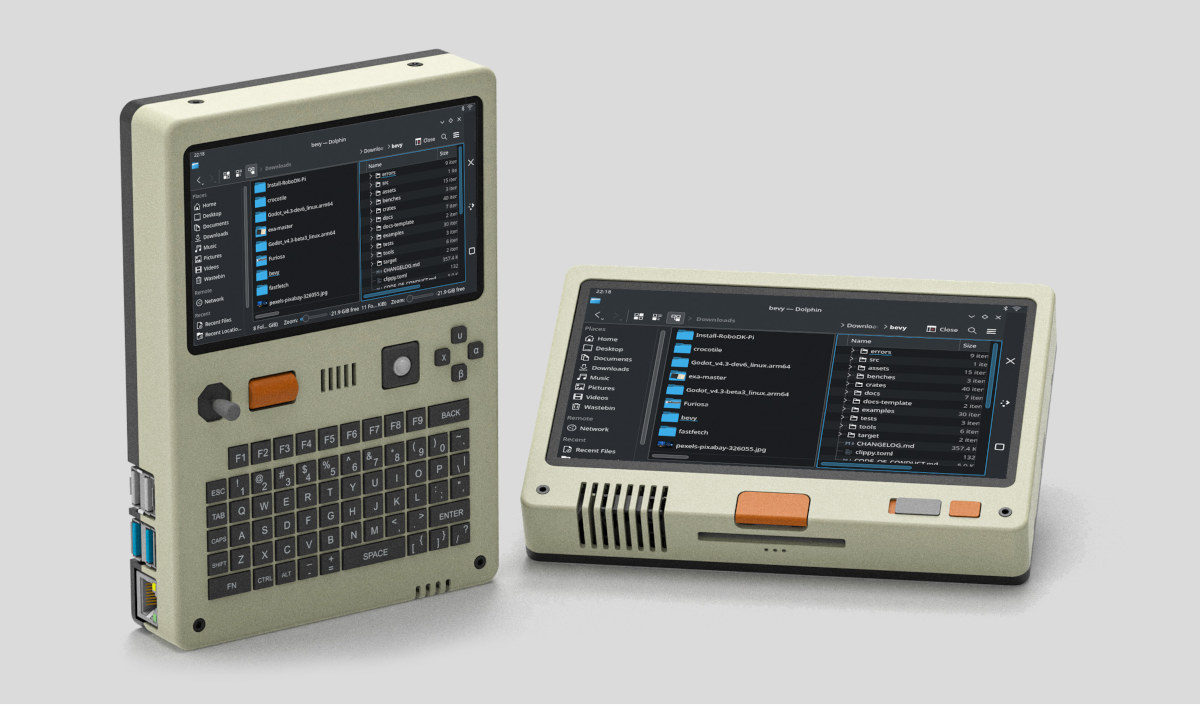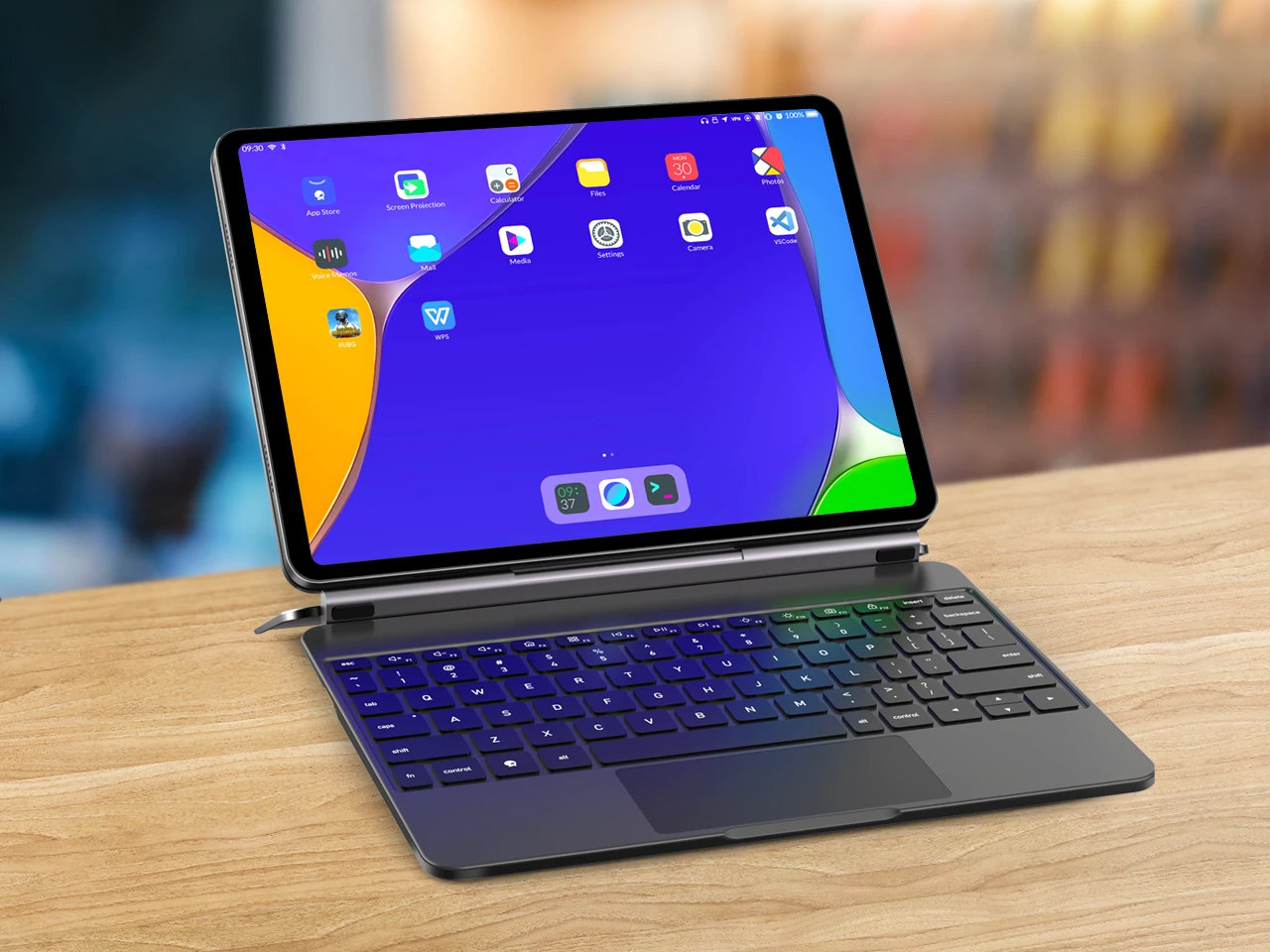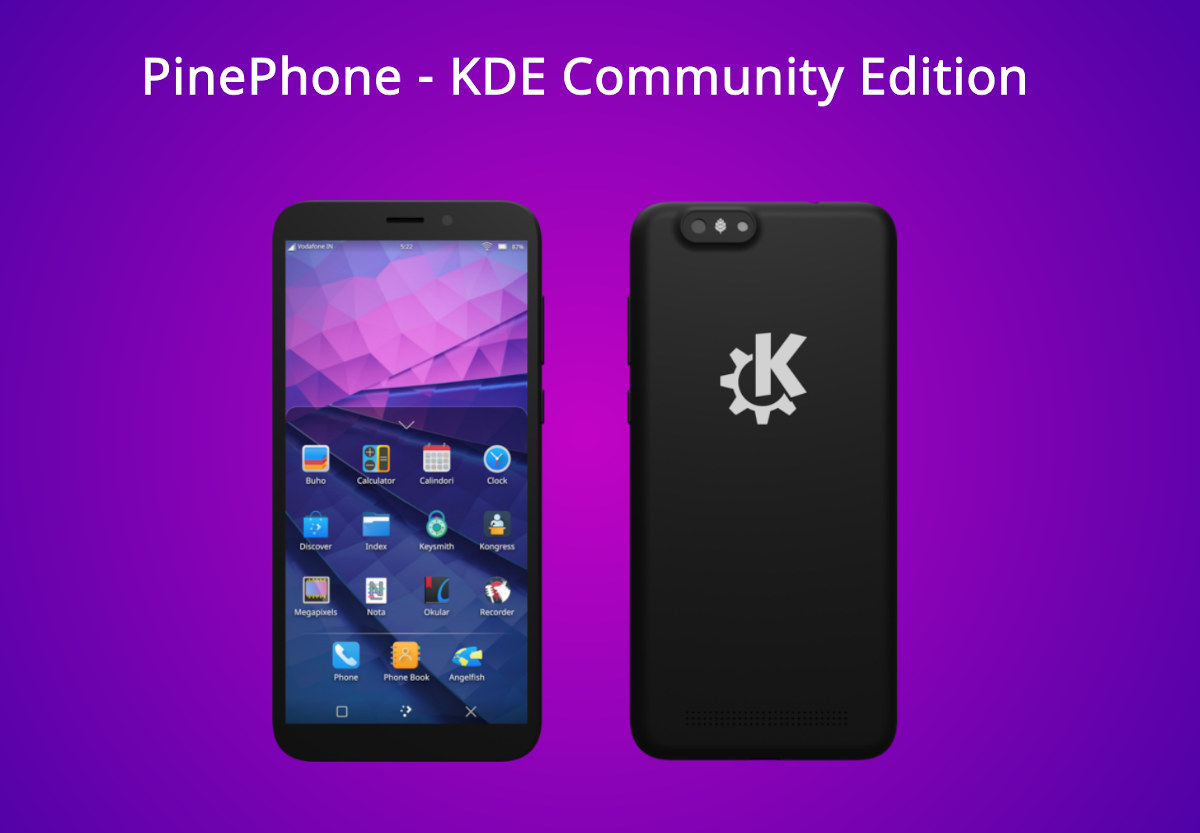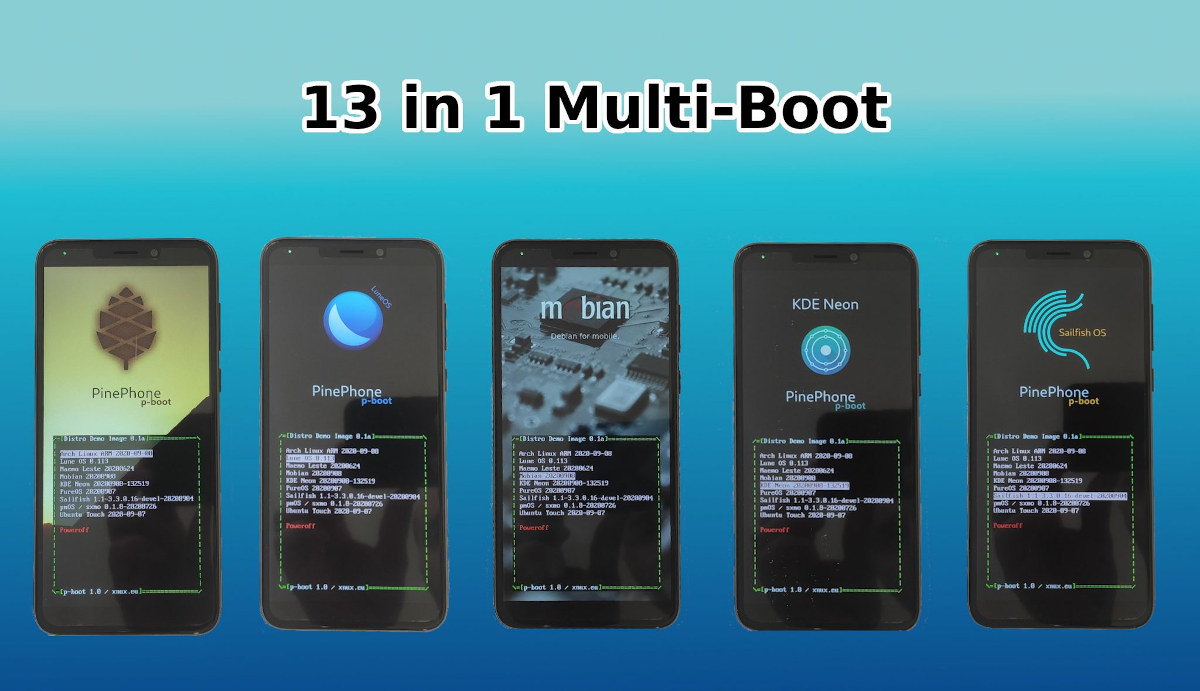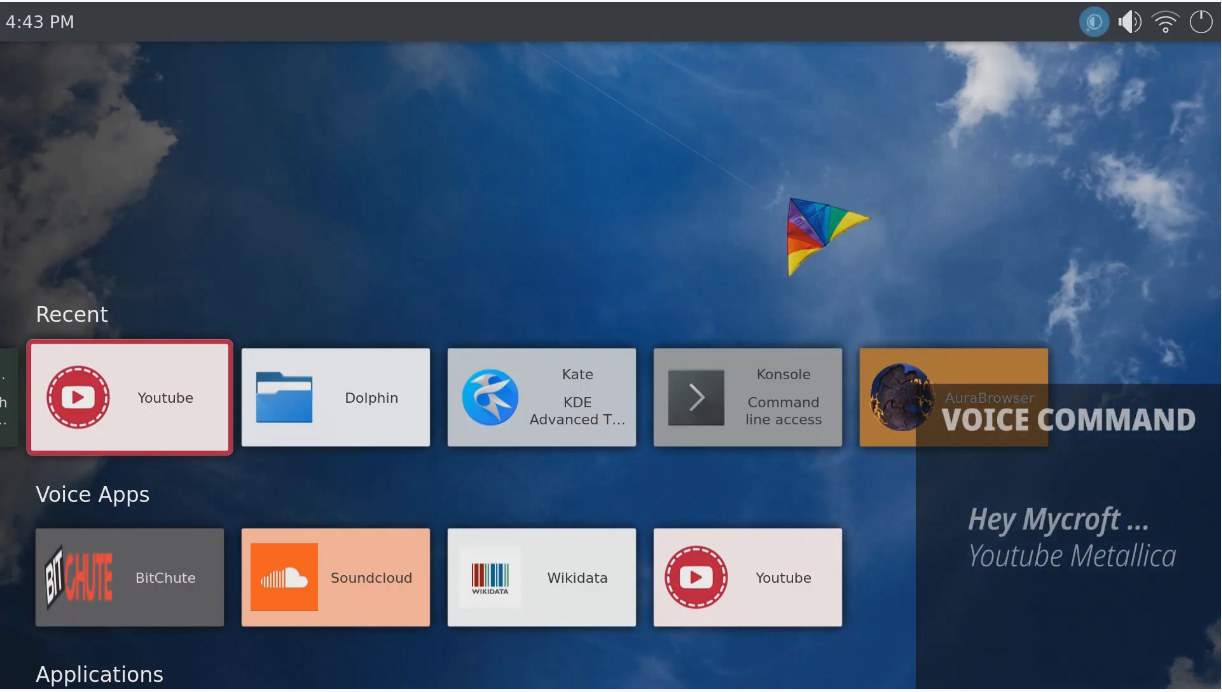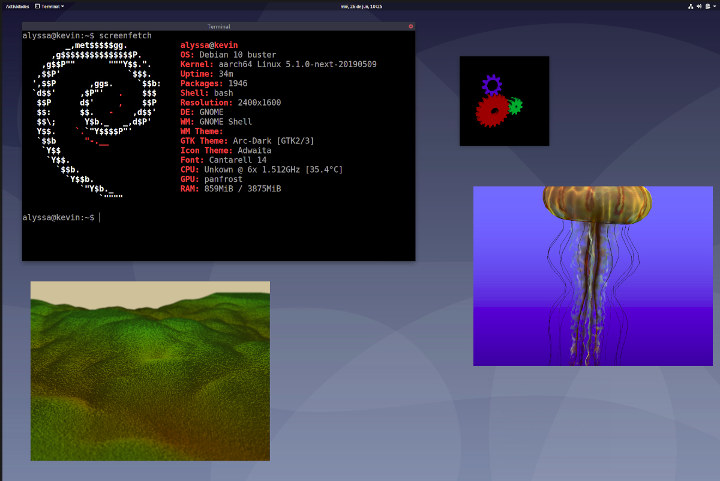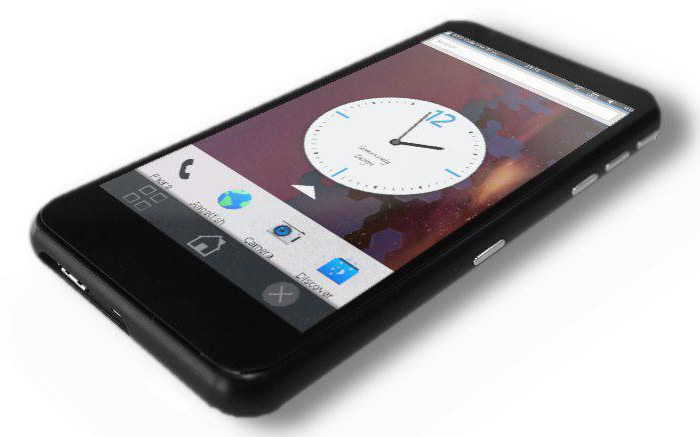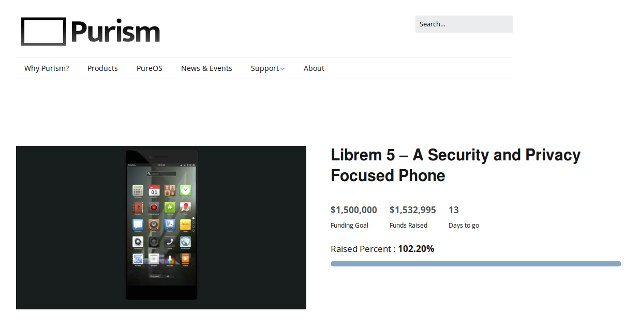Pilet is a modular, open-source hardware, portable computer designed for the Raspberry Pi 5 SBC, and equipped with a choice of displays, keyboards, and an optional battery module that can last for up to 7 hours. Two models are available: the Pilet 5 with a 5-inch display, an integrated keyboard, a trackball, a scroll wheel, a navigational switch (D-Pad), and game buttons, and the Pilet 7 with a larger 7-inch display and support for detachable modules such as a keyboard, gamepad, or deck. Pilet specifications: Supported SBC – Raspberry Pi 5 Storage – MicroSD card, NVMe SSD via module Display Pilet 5 – 5-inch IPS MIPI DSI display with 1280×800 resolution, capacitive touch screen. Pilet 7 – 7-inch IPS MIPI DSI display with 1280×800 resolution, capacitive touch screen. Video Output- 2x micro HDMI ports Networking Gigabit Ethernet RJ45 port 802.11ac WiFi 5 and Bluetooth 5.0 Optional LTE cellular via module […]
JingPad A1 Arm Linux 2-in-1 tablet can run Android apps (Crowdfunding)
If you are looking for an Arm Linux tablet option are limited with, for instance, the Allwinner A64 powered 10.1-inch PineTab tablet or the CutiePi tablet with a Raspberry Pi CM4 module. If you’d like more performance, the upcoming JingPad A1 2-in-1 tablet might be an option worth looking into. The 11-inch 2K tablet features an octa-core Cortex-A75/A55 processor, coupled with 6GB RAM and 128GB storage, and can be transformed into a laptop with an optional detachable keyboard. JingPad A1 runs the company’s JingOS optimized for tablets, and which also happens to be able to run Android apps. JingPad A1 specifications: SoC – Unnamed octa-core processor with 4x Arm Cortex-A75 CPU cores @ 2 GHz, 4x Arm Cortex-A55 CPU cores @ 1.8 GHz, Imagination PowerVR GM9446 GPU @ 800 MHz. (I can’t find an exact match, but if it looks similar to MediaTek Helio P90 except the configuration is 2x […]
PinePhone KDE Community Edition smartphone with Plasma Mobile now up for pre-order
PinePhone Linux phone first launched as an early adopter phone without any OS when the “Brave Edition” was first introduced in November 2019. Since then Pine64 launched variant with different Linux mobile OS including PinePhone Community Edition: UBports, the PostMarket Edition that also added support for mobile/desktop convergence with a model with more RAM and storage, as well as a USB-C Dock, and more recently there was a batch with PinePhone Manjaro Community Edition. If you haven’t already gotten your hand on one of the earlier models, you’ll be glad to know the PinePhone KDE Community Edition is now available for pre-order for the same $149.99 price tag for the phone only or $199.99 with the convergence package. PinePhone comes with Allwinner A64 quad-core Cortex-A53 processor that been around for many years. It’s not a performance beast, but it’s well supported by the open-source Linux community, and affordable. For $150, […]
Pinephone Multiboot Image Boots 13 Different Linux Distributions
You’ve certainly heard about dual-boot systems with Windows and Linux, and possibly about triple-boot systems with an extra OS like Chromium OS or Android, but pine64’s forum user Megous has gone much further with a multiboot image for Pinephone able to boot 13 different Linux distributions! You’d think the image would occupy a lot of space on the device, but since all 13 distributions share the same Linux 5.9 kernel, all 13 operating systems fit on the internal eMMC flash or a MicroSD card with 8GB or greater capacity. The image is based on the p-boot bootloader allowing you to select the distribution of your choice and supports all PinePhones from the Braveheart Edition to the most recent revisions with 3GB RAM and 32GB storage. So what Linux distributions are supported by the multiboot image exactly? Here’s the list: Arch Linux Arm 2020-09-08 Lune OS 0.113 Maemo Leste 20200906 Mobian […]
KDE Plasma Bigscreen for TVs and TV Boxes Offers a Linux Alternative to Android TV
KDE Plasma is a desktop environment initially developed for Linux Desktop PC or SBCs, but that’s also available on Linux phones with Plasma Mobile (previously known as Plasma Active). The developers have now decided to work on a version for the big screens with Plasma Bigscreen suitable for TVs and TV boxes and offering an open-source, Linux-based alternative o Android TV. Plasma Bigscreen is community supported, completely free and open-source, and offers an interface fairly similar to Android TV launcher. It is optimized for IR remote control use including (experimental) CEC support, as well as voice control through MyCroft open-source AI & voice assistant and Bluetooth or RF remotes with a built-in microphone such as WeChip G20 or W2, or a USB microphone. By default, Plasmas Bigscreen connects to Mycroft’s Home server, which uses Google’s STT (Speech to text) sending anonymized utterances to Google, but it’s also possible to switch […]
Rock Pi 4 SBC Runs GNOME & KDE Plasma using Panfrost Open Source GPU Driver & Wayland
One of the highlights of Linux 5.2 release was support for two new Arm Mali GPU open-source drivers, namely Lima for Mali-4xx GPU, and Panfrost for the Midgard Mali-T6xx/7xx/8xx series, and the more recent Bifrost Mali-Gxx GPUs. Collabora worked on the release and was donated a few Rock Pi 4 boards from Radxa directly to work on the project. For those who are not familiar, Rock Pi 4 board is powered by a Rockchip RK3399 processor with a Mali-T860MP4 GPU that is supported by Panfrost open source GPU driver. The company managed to have Debian 10 Buster running on Rock Pi 4 using 3D graphics acceleration thanks to Panfrost drivers on both GNOME and KDE Plasma desktop environment, as well as Weston Wayland compositer. The good news is that you can build Rock Pi 4 images by yourself using Debos with the following commands:
|
1 2 3 |
git clone https://gitlab.collabora.com/rockpi/rockpi4 cd rockpi4 docker run --rm --interactive --tty --device /dev/kvm --workdir /recipes --mount "type=bind,source=$(pwd),destination=/recipes" --security-opt label=disable godebos/debos --scratchsize=8G rockpi4.yml |
Alternatively, you could directly download […]
Necunos NC_1 is a Pricey Open Source Linux “Phone” without Modem
Several weeks ago, I wrote about the upcoming “Necuno Mobile” phone made by a company called Necunos and running Linux on NXP i.MX6 Quad processor. The phone was supposed to be 100% open source hardware which all software and hardware resources to be made available publicly. There has been progress since then, as well as a name change since Necunos NC_1 is now up for pre-order for 1,199 Euros including VAT and international shipping with delivery promised in March 2019. Necunos NC_1 specifications are said to include: SoC – NXP i.MX 6Quad quad-core Arm Cortex-A9 processor with Vivante GPU System Memory – 1GB RAM Storage – 8 GB storage Display – 5″ touchscreen (attached or detached) Audio – 3.5mm audio jack, built-in microphone, and speaker Connectivity – 2.4 GHz 802.11 b/g/n WiFi Misc – Power, volume, and user programmable buttons USB – 1x micro USB port Battery – 3,500 mAh […]
Purism Librem 5 Open Source Linux Smartphone Meets its 1.5 Million Dollars Funding Target
Back in the summer, we reported about Purism Librem 5, a privacy-focused, open source Linux smartphone. The hardware has not been developed yet, at the time the company was still considering either i.MX 6 Cortex A9 processor or i.MX8 Cortex A53 processor for the phone, and asked for 1.5 million dollars in their self-managed crowdfunding campaign to get the phone delivered in 2019. The project was interesting but with the current status for the project, amount to be raised, and delivery timeline, it was a long shot. But it turns out there’s some demands for smartphones outside of Android and iOS ecosystem, and since then, KDE and the GNOME foundation have joined the project leading to more coverage & people getting involved, and Librem 5 phone is now fully funded with 13 days to go. The processor will likely be NXP i.MX 8M Quad quad core Cortex A53 SoC, as […]


